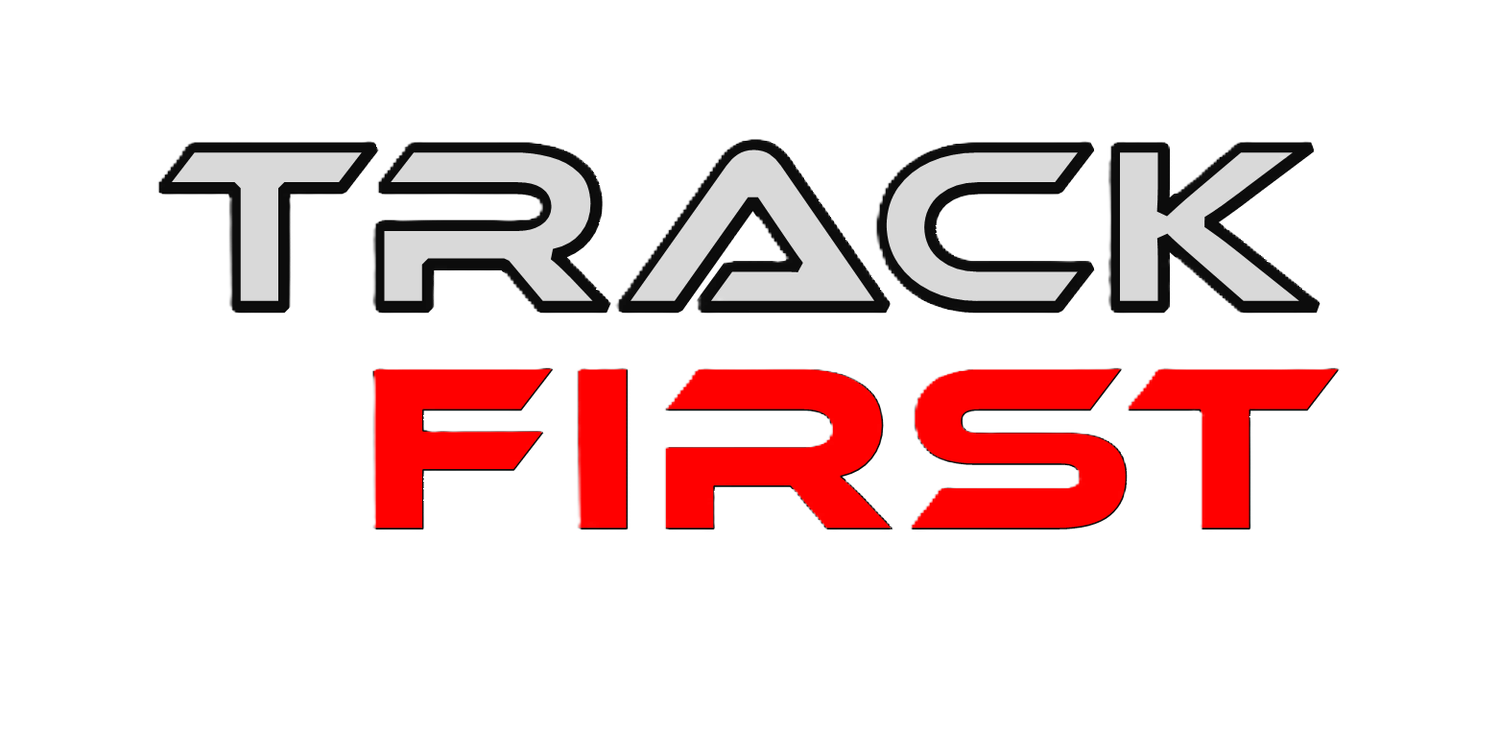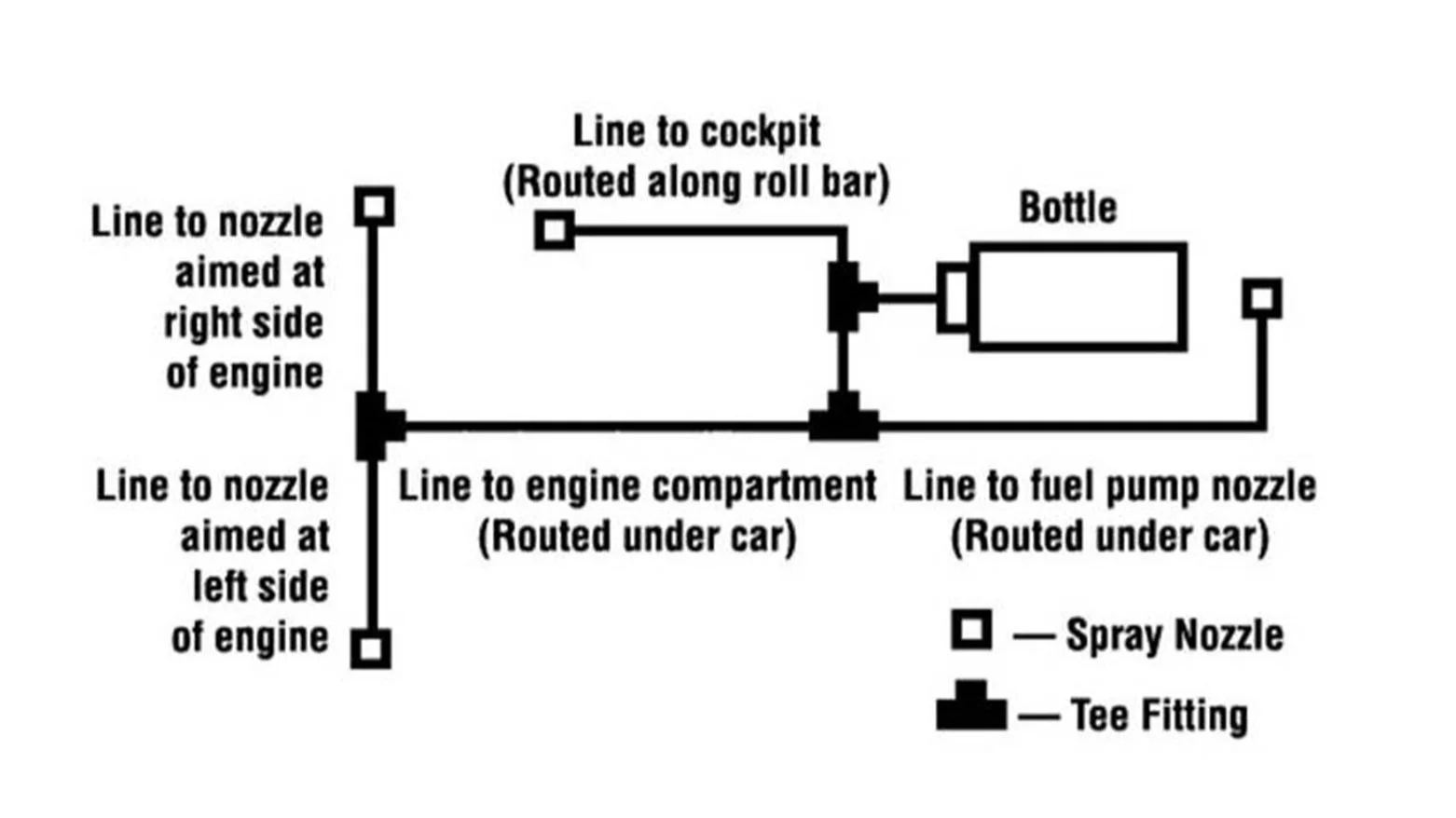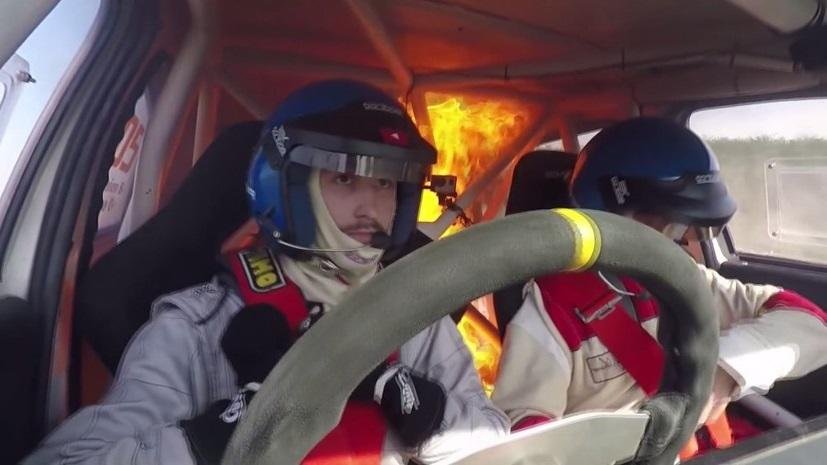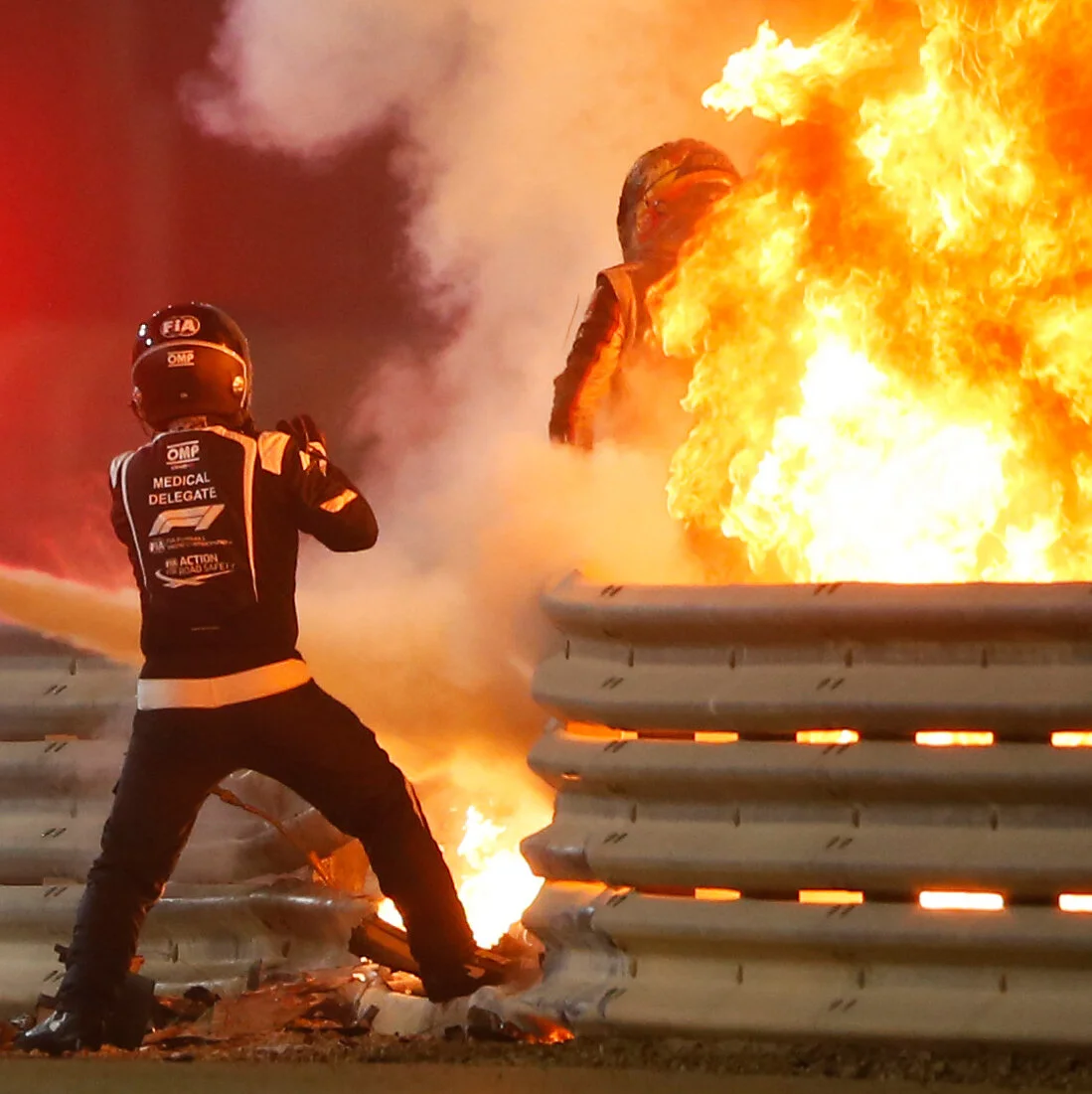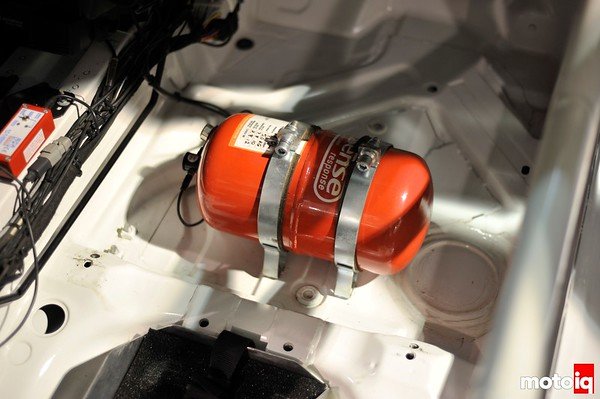
Fire Suppression Systems - the Fundamentals

Fire Suppression Fundamentals
Fire - the silent villain
CONTENTS
What you need to know
Fire Suppression Systems
Re-certification
Fire Suppression Active Ingredients.
Fire suppressions systems are NOT designed to save your car, they are designed to save YOU. Once activated the fire suppressant limits the car’s occupant(s) exposure to the fire, giving them time to exit the vehicle. Remember, once activated the bottles content will be fully deployed, but that’s it. In all likelihood the fire will return. So know you exit protocol - you may only be protected for 10 - 15 seconds! We recommend you practice your exit escape protocol blindfolded. The cockpit can quickly fill with smoke - disorientating even the more experienced drivers.
What you need to know
From 2023 sanctioning bodies and motorsports organization have updated their rules and regulations, making significant changes to their fire suppression requirements - and fundamentally saying, for racing, an installed fire-suppression system is mandatory. ALWAYS CHECK YOUR GROUP’S RULEBOOK
For example, the National Auto Sport Association (NASA) for 2023 have completely replaced their previous fire safety rules. (CHECK - NASA CCR (Codes & Regulations) 15.1 Fire Extinguisher, CCR 15.2 Fire System & CCR 15.3 Fire System Required Decal)
15.1 - A fire extinguisher is recommended in addition to the required fire system…..
15.2 - A fire system meeting SFI specification 17.1 or 17.2, or those listed by the FIA on Technical List No. 16 with a visible SFI or FIA certification decal is required.
15.3 Fire System Required Decal Vehicles must display two (2) “E” decals, one (1) required inside at the fire system activation point,
Check SCCA GCR 9.3.22 “requires all cars shall be equipped with an On-Board Fire System except T3, T4, STL, Spec Miata, and improved Touring.”
In addition the FIA and SFI have made changes…
In the US all sanctioning bodies will state what fire extinguishers are allowed and what type of fire suppression systems are allowed. They will also clearly state which type of extinguishing mediums are permitted and other pertinent information - so start with checking your rule book. MOST will ask for a FIA and/or SFI fire suppression certification.
FIA Technical List No.16, Technical List No. 52 (8865-2015)
In essence, Technical List No. 16 is for older competition cars and rally events, while Technical List No. 52 (8865-2015) is for newer, high-level motorsport events and cars that require the latest safety standards.
LINKS: SFI & FIA
https://www.sfifoundation.com/wp-content/pdfs/specs/Spec_17.1_062620.pdf
https://www.sfifoundation.com/wp-content/pdfs/specs/Spec_17.2_041919.pdf
FIA Technical List No.16, Technical List No. 52 (8865-2015)
Approved FIA Homologated Extinguisher System Technical List No. 16
Fire suppression systems
We advise you choose a system with a FIA or a SFI certification. They will be current with the latest permitted regulations, standards and the safest ingredients for fire suppression materials. For example neither the SFI or the FIA now permit the use of HALON. In the SFI (US) Halon has been replaced with Dupont FE36. FIA is either foam based (AFFF, ) or Novec based - see below.
WHAT SYSTEM DO I NEED? CHECK YOUR GROUP’S RULE BOOK
In addition, if you already have a system, you need to inspect the dates on the canister. The contents have a 2 year expiration date, and the canisters have to be replaced every 10 years.The type of race and the class you have entered can alter the safety rule requirements. For example, rally drivers will be required to carry an extra (separate) fire extinguisher since, following an incident, they are much more likely to be isolated from immediate help.
If you are offered a choice, we recommend FIA - it is tested to a higher standard. It is internationally recognized, and always scientifically current.
REMEMBER, FIRE NEEDS -
OXYGEN +
AN IGNITION SOURCE (heat) +
A FUEL SOURCE
To be effective fire suppression systems must immediately attack, and eliminate at least one of these ingredients. BUT the suppression will only last as long as the suppression ingredient lasts. Always, take this into consideration when selecting a fire suppression system.
FIRE SUPPRESSION SYSTEMS ARE PLUMBED INTO THE VEHICLE
At minimum the system will feature one fire bottle containing the extinguishing medium, an activator (mechanical or electrical,) nozzles, pressure gauges, plumbing, brackets, and all the components necessary for a professional installation.
At minimum one nozzle MUST be placed in a position to protect the driver. The other nozzle(s) are placed at potential sources of ignition - in the engine compartment (turbo, exhaust header etc.) - next to the fuel cell.
NOTE manufacturers installation instructions must be followed. Adding or subtracting nozzles will void any certifications. Most systems specify locations, if they do not then check your rule book guidelines.
Great Article to help https://nasaspeed.news/tech/safety/the-importance-of-a-good-racing-fire-system/
REMEMBER this is all about protecting the vehicle’s occupants, and giving them time to exit the vehicle immediately. Fire Marshalls are better equipped to save your car. EV vehicles are a new area for concern - especially for Fire Marshalls, and the track owners. However, the new issues created by EV vehicles are currently under constructive discussion.
RECERTIFICATION
SFI & FIA require the bottles to be recertified every 2 years. Bottles that are past their mandatory service date cannot be recertified or refilled.
The total service life from the date of installation is currently limited to 6 years for SFI systems and 10 years for FIA systems, after this the bottle will have to be replaced.
Non-certified (SFI or FIA) systems will also state recertification and expiration dates.
ONLY MANUFACTURERS & FACTORY-AUTHORIZED SERVICE CENTERS can recertify, replace or refill your bottle. Contact us and we will direct you to authorized locations - it depends on the brand you bought. It can take plus 3 weeks - shipping of hazardous materials also increases the turn-around time as they can only be ground shipped
CHECK YOUR LABELS EARLY & BE READY FOR YOUR RACING SEASON.
Fire - the silent villain
Fire suppressions systems are NOT designed to save your car, they are designed to save YOU. Once activated the fire suppressant limits the car’s occupant(s) exposure to the fire, giving them time to escape the vehicle. Remember, once activated the bottles content will be fully deployed, but that’s it. In all likelihood the fire will return. So know you exit protocol - you may only be protected for 10 - 15 seconds! We recommend you practice your exit escape blindfolded. The cockpit can quickly fill with smoke - disorientating even the more experienced drivers.
What you need to know
CONTENTS
what you need to know
Fire Suppression Systems
Re-certification
Fire Suppression Active Ingredients.
From 2023 sanctioning bodies have updated their rules and regulations, making significant changes to their fire suppression requirements - and fundamentally saying, for racing, an installed fire-suppression system is mandatory.
For example, the National Auto Sport Association (NASA) for 2023 have completely replaced their previous fire safety rules. CHECK - CCR (Codes & Regulations) 15.1 for Fire Extinguisher, CCR 15.2 for Fire System & CCR 15.3 for Fire System Required Decals
Check SCCA GCR 9.3.22 “requires all cars shall be equipped with an On-Board Fire System except T3, T4, STL, Spec Miata, and improved Touring.”
In addition the FIA and SFI have made changes…
To summarize - in the US all sanctioning bodies will state what fire extinguishers are allowed/mandated, and what type of fire suppression systems are allowed/mandated. They will also clearly state which type of extinguishing mediums are permitted and other pertinent information - so start with checking your groups rule book. MOST will ask for a FIA and/or SFI fire suppression certification.
SFI specification 17.1 or SFI Spec 17.2
FIA Technical List No.16, Technical List No. 52 (8865-2015)
Approved FIA Homologated Extinguisher System Technical List No. 16
Fire suppression systems
We advise you choose a system with a FIA or a SFI certification. They will be current with the latest permitted regulations, standards and the safest ingredients for fire suppression materials. For example neither the SFI or the FIA now permit the use of HALON. In the SFI (US) Halon has been replaced with Dupont FE36. FIA is either foam based (AFFF, ) or Novec based - see below.
WHAT SYSTEM DO I NEED? CHECK YOUR RULE BOOK
Early check your 2023 racing rule book. In addition, if you already have a system, you need to inspect the dates on the canister. The contents have a 2 year expiration date, and the canisters have to be replaced every 10 years.
The type of race and the class can alter the safety rule requirements. For example, rally drivers will be required to carry an extra (separate) fire extinguisher since they are more likely to be isolated from immediate help.
If you are offered a choice, we recommend FIA - it is tested to a higher standard. It is internationally recognized, and always scientifically current.
Fire Needs - Oxygen + an ignition source (heat) + a fuel source
To be effective fire suppression systems must immediately attack and eliminate at least one of these ingredients. BUT the suppression will only last as long as the suppression ingredient lasts. Always, take this into consideration when selecting a fire suppression system.
FIRE SUPPRESSION SYSTEMS ARE PLUMBED INTO THE VEHICLE
At minimum the system will feature one fire bottle containing the extinguishing medium, an activator (mechanical or electrical,) nozzles, pressure gauges, plumbing, brackets, and all the components necessary for a professional installation.
At minimum one nozzle MUST be placed in a position to protect the driver. The other nozzle(s) are placed at potential sources of ignition - in the engine compartment (turbo, exhaust header etc.) - next to the fuel cell.
NOTE manufacturers installation instructions must be followed. Adding or subtracting nozzles will void any certifications. Most systems specify locations, if they do not then check your rule book guidelines.
Great Article to help https://nasaspeed.news/tech/safety/the-importance-of-a-good-racing-fire-system/
REMEMBER this is all about protecting the vehicle’s occupants and giving them time to exit the vehicle immediately. Fire Marshalls are better equipped to save your car. EV vehicles are a new area for concern - especially for Fire Marshalls and the track owners. However, the new issues created by EV vehicles are currently under constructive discussion.
RE-CERTIFICATION & SERVICE DUE DATES
SFI & FIA require the bottles to be recertified every 2 years. Bottles that are past their mandatory service date cannot be recertified or refilled.
The total service life from the date of installation is currently limited to 6 years for SFI systems and 10 years for FIA systems, after this the bottle will have to be replaced.
Non-certified (SFI or FIA) systems will also state recertification and expiration dates.
ONLY MANUFACTURERS & FACTORY-AUTHORIZED SERVICE CENTERS can recertify, replace or refill your bottle. We will direct you to authorized locations - it depends on the brand you bought. It can take plus 3 weeks - shipping of hazardous materials also increases the turn-around time
CHECK THE LABELS/TAGS ON ALL YOUR BOTTLES & KEEP THEM CLEAR & LEGIBLE
CHECK YOUE LABELS EARLY & ALWAYS BE READY FOR YOUR RACING SEASON.
FIRE SUPPRESSION MATERIALS - BIMMERWORLD
(NOTE: We recommend Novec, we have seen it in action. It is initially more expensive, but the fact is does no damage to electronics, and is non-corrosive makes Novec eventually cost-effective.)
Halon For years halon was The Standard for racing fire systems because of its ability to suppress multiple types of fires. It was only because its production is harmful to the ozone that halon is no longer in widespread use. Any halon extinguisher that you find now is likely long past its service date. Halon is also considered an older fire suppressant while newer technology and chemicals are better in many areas.
CO2 The CO2 suppressant works by removing oxygen from the area and is extremely cold, thereby reducing temperature and ignition source. This can be very good for fuel and oil fires as well as electrical. But as a life-saving measure, CO2 may render you unable to exit the car. CO2 is not approved for any racing use as far as is known.
ABC (dry chemical, powder) This gets its name from the 3 classes of fire that it's designed to suppress - A for combustible material, B for flammable liquids, and C for electrical fires. The suppressant is known as a "dry chemical", "dry chem", or "powder" and is usually made up of monoammonium phosphate and ammonium sulfate. Note: "Dry Powder" also refers to a different suppressant material for Class D fires but is most often referenced for ABC dry chemical suppressants. The dry chemical isolates the oxygen while separating the fuel source. As a powder the dry chemical is easy to disperse and coat surfaces, even hard to reach areas. However, the dry chemical is corrosive to metal and electrical items. And it can be spread everywhere, making clean-up very difficult. Powder will also settle and compact together over time, helped by vibration. Packed and hardened powder will not disperse through the system! We've seen a puff where there should have been a dense cloud! Most handheld extinguishers will use ABC because of its good all-around performance and low cost.
Monnex Powder. Monnex is the next generation of dry powder and surpasses ABC powder in many ways. When exposed to heat, Monnex breaks down into smaller particles which increases total surface area of the material and distributes it more evenly. This does a better job of smothering flames and separating oxygen and heat, preventing fire from occurring. In testing, Monnex knocked down a fire in half the time of ABC powder. Unlike ABC, Monnex is non-corrosive and wipes away like a fine powder. Monnex is classed for B and C flammable materials so it works very well on gas, liquids, and electronics. Monnex works great on its own but can also be combined with other suppressants to act as a "dual-agent" system.
AFFF (Aqueous Film Forming Foam or foam for short) When people say "foam" they are referring to AFFF. The foam suppressant is a water-based liquid that coats surfaces, removing the ignition source and oxygen. The foam is two-dimensional and can only suppress what it can cover so the position of the nozzle is critical. There are typically more nozzles in a foam system than powder or gas so the installation will be more extensive and complex. Once the fire is smothered the foam stays behind to prevent flare-ups. It works especially well on fuel and oil fires but not good at all for an electrical fire because the water is conductive. Clean-up is easy but the chemical can be corrosive if left behind. Because it's water based it's susceptible to freezing but some products contain an antifreeze component. If this is a concern check for the freeze point. AFFF has often been used in forest fires but is being phased out because of the contamination left behind. Cold Fire is a similar material but is biodegradable and will be replacing AFFF in the future. The minimum requirement for an FIA fire system is an AFFF suppressant.
Cold Fire Similar but superior to AFFF but is environmentally friendly. It's non-toxic, non-corrosive, plant-based, and biodegradable. Like the name says it works by reducing the heat and penetrating and breaking down the fuel source. As a liquid it works well with fuel and oil but will not be effective for an electrical fire. Sometimes it's mixed with a small amount of dry chem to make it thicker and cling to surfaces for longer.
Novec Novec works by removing (absorbing) heat and blocking oxygen. It starts as a liquid but is atomized into a heavy gas as it exits the nozzle and the fog travels to all surfaces. The vapor alone is enough to suppress flame as it expands. This means you can do more with less - it does not require as much material so your bottle can be smaller (less weight). Novec is not harmful to electronics and is non-corrosive. It's not harmful to humans except in prolonged high levels where it can cause a heart arrhythmia. Clean-up is super easy as the material evaporates and there is no residue left behind. The beauty of Novec is that it knocks down the fire, allows you to exit, is non-toxic, and does not ruin your equipment.
FIRE SUPPRESSION MATERIALS - BIMMERWORLD
Halon For years halon was The Standard for racing fire systems because of its ability to suppress multiple types of fires. It was only because its production is harmful to the ozone that halon is no longer in widespread use. Any halon extinguisher that you find now is likely long past its service date. Halon is also considered an older fire suppressant while newer technology and chemicals are better in many areas.
CO2 The CO2 suppressant works by removing oxygen from the area and is extremely cold, thereby reducing temperature and ignition source. This can be very good for fuel and oil fires as well as electrical. But as a life-saving measure, CO2 may render you unable to exit the car. CO2 is not approved for any racing use as far as is known.
ABC (dry chemical, powder) This gets its name from the 3 classes of fire that it's designed to suppress - A for combustible material, B for flammable liquids, and C for electrical fires. The suppressant is known as a "dry chemical", "dry chem", or "powder" and is usually made up of monoammonium phosphate and ammonium sulfate. Note: "Dry Powder" also refers to a different suppressant material for Class D fires but is most often referenced for ABC dry chemical suppressants. The dry chemical isolates the oxygen while separating the fuel source. As a powder the dry chemical is easy to disperse and coat surfaces, even hard to reach areas. However, the dry chemical is corrosive to metal and electrical items. And it can be spread everywhere, making clean-up very difficult. Powder will also settle and compact together over time, helped by vibration. Packed and hardened powder will not disperse through the system! We've seen a puff where there should have been a dense cloud! Most handheld extinguishers will use ABC because of its good all-around performance and low cost.
Monnex Powder. Monnex is the next generation of dry powder and surpasses ABC powder in many ways. When exposed to heat, Monnex breaks down into smaller particles which increases total surface area of the material and distributes it more evenly. This does a better job of smothering flames and separating oxygen and heat, preventing fire from occurring. In testing, Monnex knocked down a fire in half the time of ABC powder. Unlike ABC, Monnex is non-corrosive and wipes away like a fine powder. Monnex is classed for B and C flammable materials so it works very well on gas, liquids, and electronics. Monnex works great on its own but can also be combined with other suppressants to act as a "dual-agent" system.
AFFF (Aqueous Film Forming Foam or foam for short) When people say "foam" they are referring to AFFF. The foam suppressant is a water-based liquid that coats surfaces, removing the ignition source and oxygen. The foam is two-dimensional and can only suppress what it can cover so the position of the nozzle is critical. There are typically more nozzles in a foam system than powder or gas so the installation will be more extensive and complex. Once the fire is smothered the foam stays behind to prevent flare-ups. It works especially well on fuel and oil fires but not good at all for an electrical fire because the water is conductive. Clean-up is easy but the chemical can be corrosive if left behind. Because it's water based it's susceptible to freezing but some products contain an antifreeze component. If this is a concern check for the freeze point. AFFF has often been used in forest fires but is being phased out because of the contamination left behind. Cold Fire is a similar material but is biodegradable and will be replacing AFFF in the future. The minimum requirement for an FIA fire system is an AFFF suppressant.
Cold Fire Similar but superior to AFFF but is environmentally friendly. It's non-toxic, non-corrosive, plant-based, and biodegradable. Like the name says it works by reducing the heat and penetrating and breaking down the fuel source. As a liquid it works well with fuel and oil but will not be effective for an electrical fire. Sometimes it's mixed with a small amount of dry chem to make it thicker and cling to surfaces for longer.
Novec Novec works by removing (absorbing) heat and blocking oxygen. It starts as a liquid but is atomized into a heavy gas as it exits the nozzle and the fog travels to all surfaces. The vapor alone is enough to suppress flame as it expands. This means you can do more with less - it does not require as much material so your bottle can be smaller (less weight). Novec is not harmful to electronics and is non-corrosive. It's not harmful to humans except in prolonged high levels where it can cause a heart arrhythmia. Clean-up is super easy as the material evaporates and there is no residue left behind. The beauty of Novec is that it knocks down the fire, allows you to exit, is non-toxic, and does not ruin your equipment.
We recommend Novec, we have seen it in action. It is initially more expensive, but the fact is does no damage to electronics and is non-corrosive makes Novec cost-effective.
